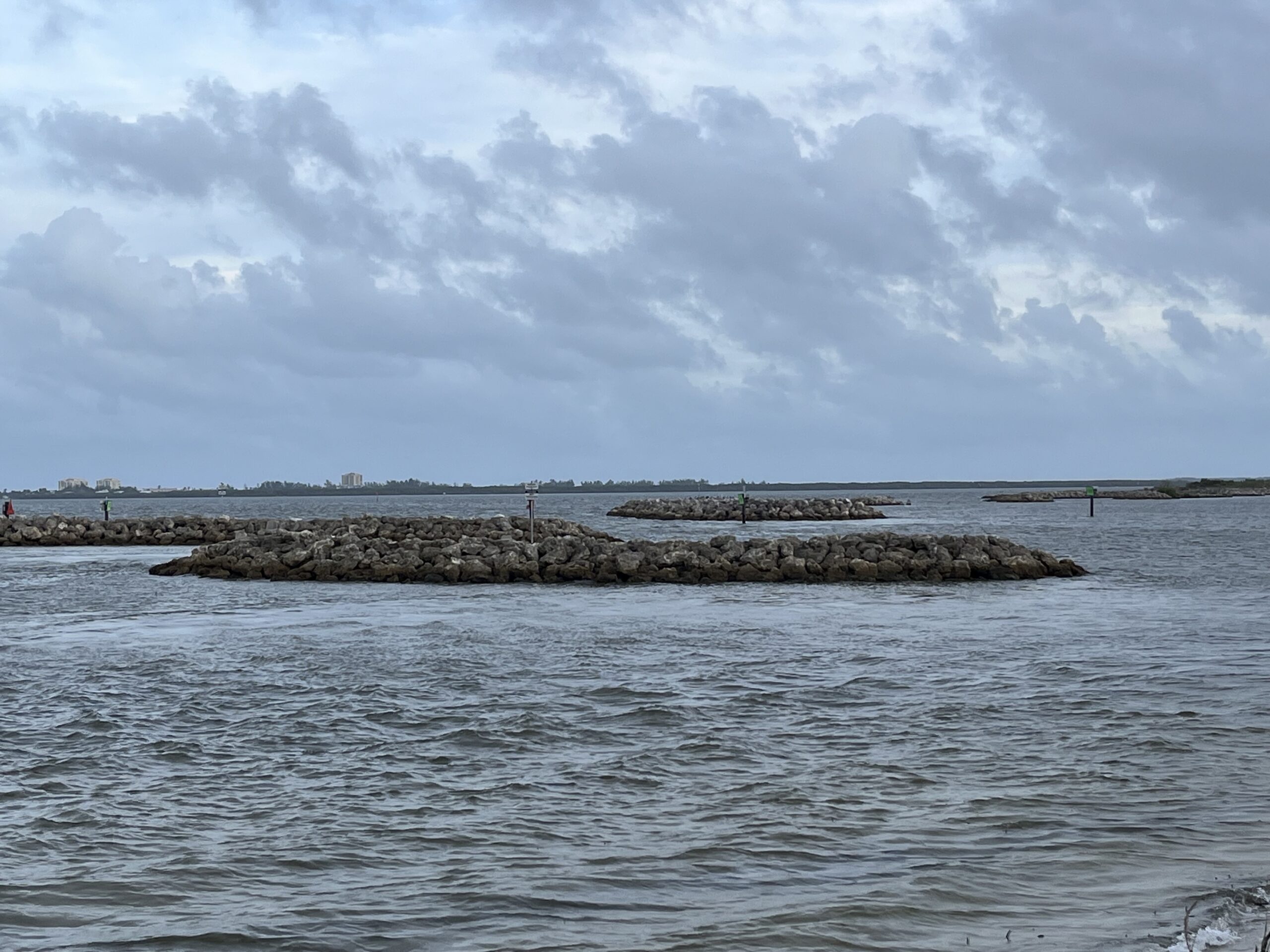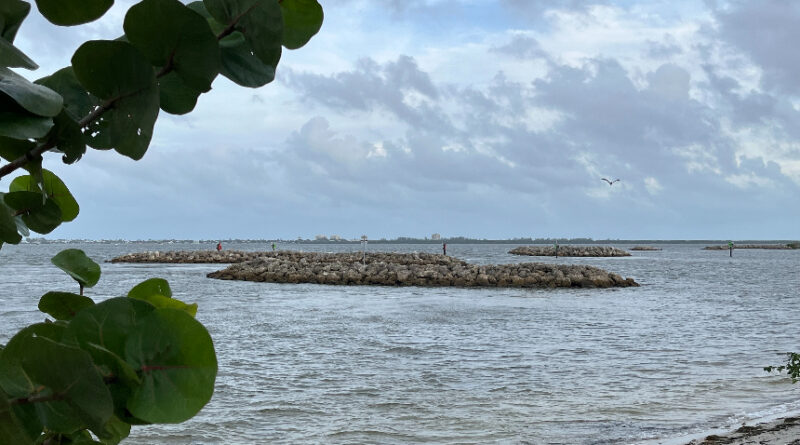The Success Of Artificial Islands Strengthens Resilience From Coastal Storms
As you look out of the harbor, you see a series of small rocky outcrops breaking through the swells. These artificial islands are popular nesting areas for a wide variety of birds due to the islands’ elevation, which was designed to consider the effects of potential boat wakes, natural wave action, and king tides. Overwash is minimized, nesting sites are protected, and birds seek out the enhanced vantage point.
But enhancing bird populations is really only a byproduct of these artificial islands, which have made the news recently off Staten Island. That project will offer storm protections that build upon but also transcend the common practices of building harbor breakwaters worldwide. It will be a tremendous change from the pounding waves that crashed into seaside homes in the Tottenville neighborhood when Superstorm Sandy struck the city 12 years ago. Then, ocean swells collapsed houses and ripped others from their foundations.
Staten Island is hardly the first area to construct what’s sometimes termed “Living Breakwaters,” however. In fact, my coastal community of Fort Pierce, Florida built artificial islands after Hurricanes Jeanne and Frances in 2004 destroyed the marina area. Several hurricanes have hit near our area since then, but the artificial islands have proven amazingly resilient in preventing significant storm-related damage.
Twenty Years of Protection — An Artificial Island Pilot Program that has Worked
The main gathering and tourist area in Fort Pierce is along the marina, which leads first to the picturesque waters of the Indian River Lagoon and then out to the Atlantic. When Hurricanes Jeanne and Frances hit Fort Pierce within two weeks of the other two decades ago, sustained winds were measured at 80 mph, gusting to 108 mph. A mile section of Indian River Drive along the Intracoastal Waterway was washed out. The south jetty at Fort Pierce Inlet sustained significant damage to its asphalt walkway. St. Lucie County sustained $2.5 billion in damage, with a substantial amount of the damage attributable to the Fort Pierce Municipal Marina.
Afterward, the City of Fort Pierce proposed an idea to build a storm protection system to protect its 269 slip marina and public waterfront areas. To preserve the attractive features and improve its ecological value, the City desired a natural type of protective system consisting of multiple islands with significant environmental enhancements, including mangrove and dune plantings and artificial reef areas.
When you look out at the artificial islands today (see featured image), they seem so well-suited to the landscape that it appears as if they’ve always been there. However, the development of the coastal structure components of the project requiring engineering firm, Tetra Tech to adhere to the theory of the artificial island design, to plan for Tee-groins and pocket beaches, and to create a rock archipelago. Numerical modeling of current patterns and projected wave transmission were identified using three dimensional physical modeling of the breakwaters under both wave and current conditions. Those considerations were supplemented by large scale flume testing of armor and beach stability and erosion assessments of the island dune barriers.
To provide wave and current protection for the marina, Tetra Tech developed a 15-acre island breakwater system designed to perform under existing conditions and adapt to projected sea level rise conditions. The protection system included a first-line artificial island complex incorporating beneficial reuse of approximately 150,000 cubic yards of dredged sand, structural stability, and functional performance enhancement through mangrove plantings, tidal lagoon features, and oyster reefs. The new breakwater system was adapted to withstand projected sea level rise conditions, and numerical and physical modeling integrated breakwater systems with flow and sediment transport patterns.
Sovereign submerged land issues and changes in the permitting climate allowed this environmentally friendly protection concept to be approved. FEMA assistance programs made enhanced marina protections possible — it funded the replacement of the marina docks and offered a hazard damage mitigation grant to fund the storm protection elements of the project.
Fast Forward to Staten Island’s Artificial Islands
Funded with $111 million in Hurricane Sandy recovery money, the “Living Breakwaters,” constructed about 1,000 feet off the Tottenville beach, were conceived to protect residents from future storms. While the concrete and rock barriers can’t stop flooding, project designers say they will sap the force of ocean waves, reducing daily erosion and damage from future storms, as the Boston Globe reported,
Living Breakwaters architect Pippa Brashear said New York’s reefs were designed to create a habitat for marine life. “It’s not just risk reduction,” Brashear explained, “but niches and crevices, complex surfaces for fowling organisms to form and for juvenile fish to kind of hide and get refuge — refuge from predation.”
Birds are already using the islands as a nesting ground. They have become a winter refuge for migrating seals since construction began in 2022. Algae clings to the textured concrete surfaces, covering the gray rocks and concrete with green life that flows with the current at high tide. Snails, barnacles, shrimp, and crabs are settling into tidepools molded from concrete and placed by a crane amid large stones.
One hundred years ago, New York Harbor had a robust population of oysters. Humans wiped them out. The Billion Oyster Project is restoring oyster reefs to New York Harbor in collaboration with New York City communities and as part of the Staten Island project. Oyster reefs provide habitat for hundreds of species and can protect the city from storm damage — softening the blow of large waves, reducing flooding, and preventing erosion along the shorelines. Field stations are restoration sites where organizations host regular field days utilizing an oyster installation. The sites are targeted for long-term community and student engagement with an emphasis on local involvement.
Final Thoughts
Climate experts warn that although breakwaters are a useful tool to deal with intensifying storms, they’ll only help for so long as seas continue to rise.” “Coastal management strategies intended to protect people, property, and infrastructure from storm impacts can, over decades, increase vulnerability, even leading to the loss of barrier islands, especially as sea-level rise rates increase,” A. Brad Murray, professor of geomorphology and coastal processes at Duke University’s Nicholas School of the Environment, argues.
Sea level rise poses an imminent threat to coastal communities. Yet artificial islands are dynamic features that absorb wave energy before waves hit the mainland. They have proven to lessen coastal storm surge and flooding and increase long-term resilience.

Have a tip for CleanTechnica? Want to advertise? Want to suggest a guest for our CleanTech Talk podcast? Contact us here.
Sign up for our daily newsletter for 15 new cleantech stories a day. Or sign up for our weekly one if daily is too frequent.
CleanTechnica uses affiliate links. See our policy here.
CleanTechnica's Comment Policy

